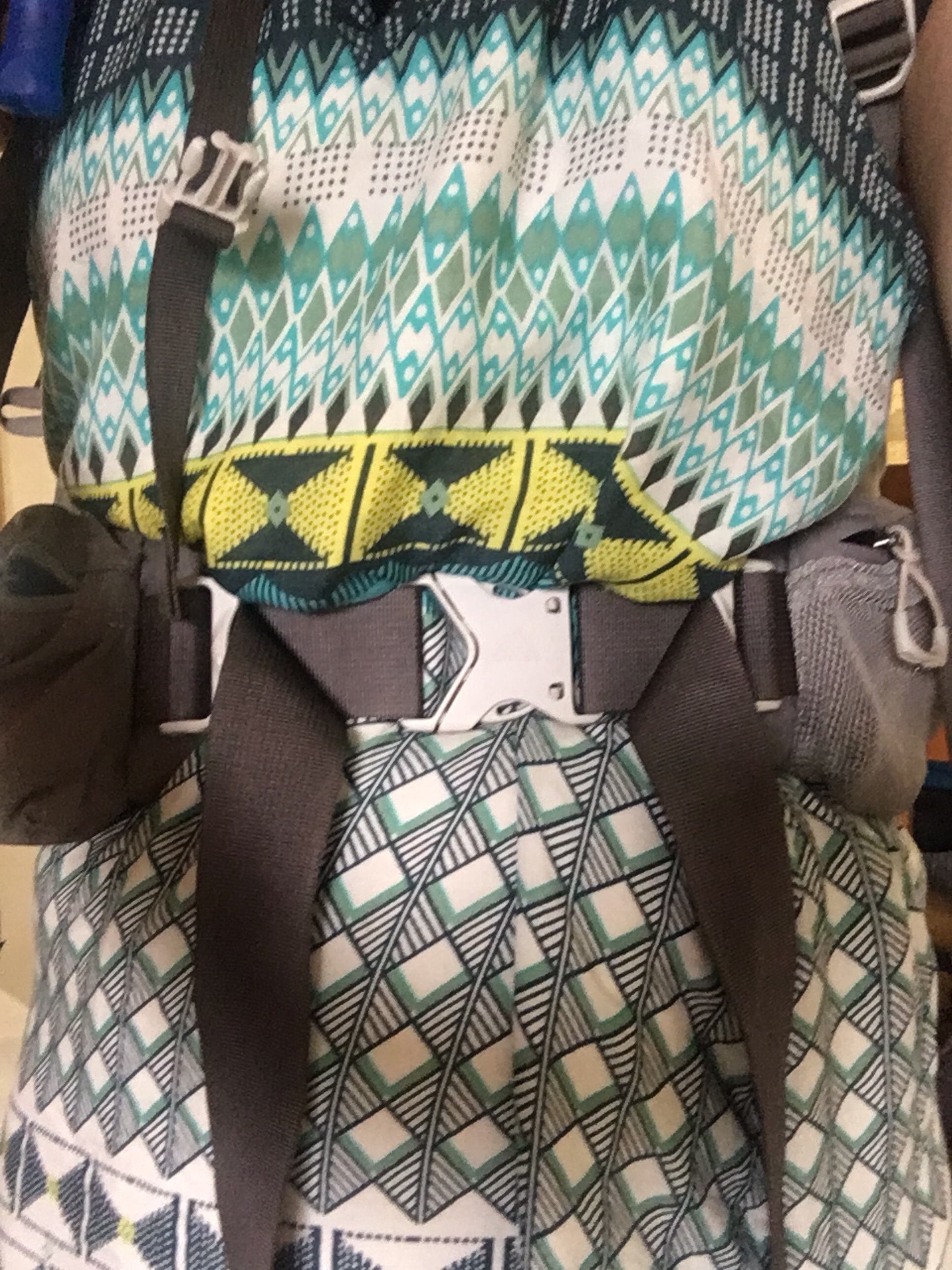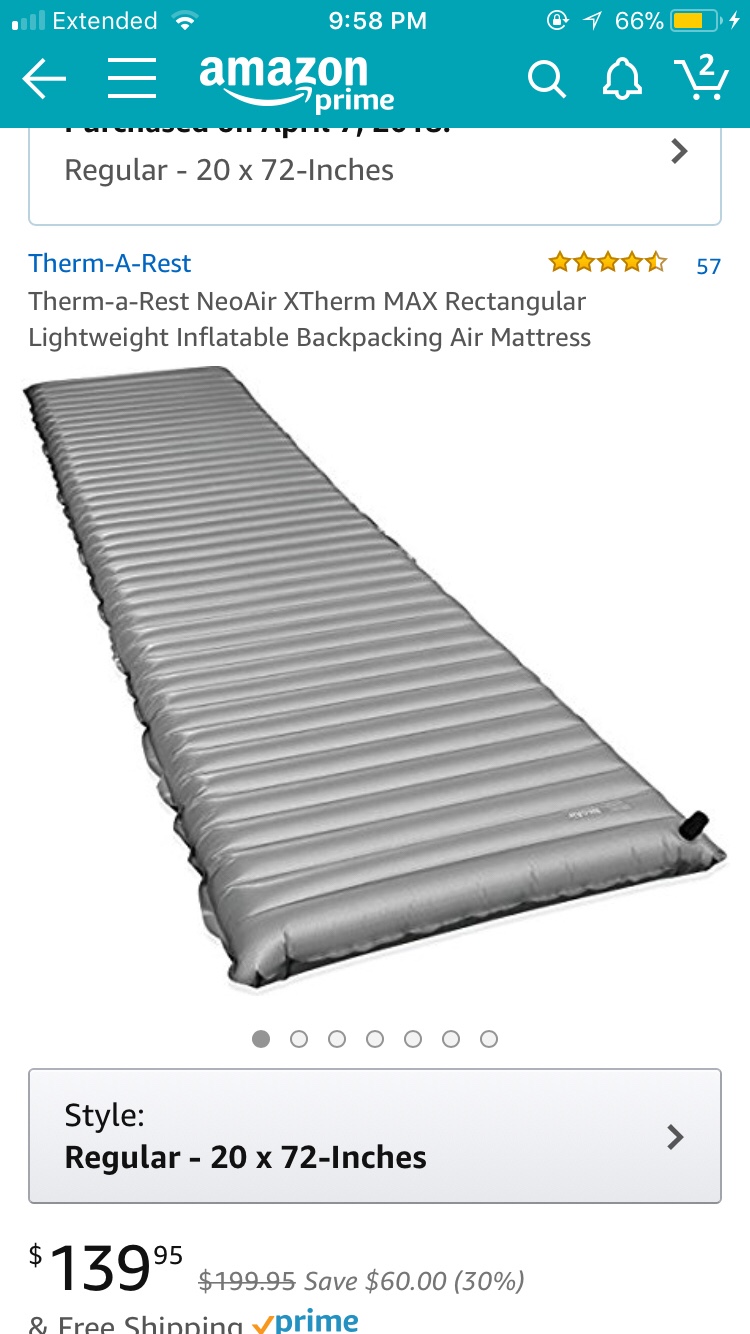Gear: Current Issues...
You may know that I've been struggling with my gear since I've been out here. I've lost a lot more weight than I expected: partially due to appetite loss and partly just because of hiking. I expected to lose maybe 5-8 pounds. I've lost about 18 pounds as of Mile 300. That's too much. Which means I'm not eating enough. This also means my pack no longer fits me the way it did when I bought it... Not eating enough also causes other problems: malnutrition which leads to poor performance and the loss of the ability to stay warm. If you knew me at home you know that usually I am always hot. I rarely complain about getting cold. Out here I've been cold nearly every day and certainly every night.
So weight loss and the practice of getting to know my gear has caused some issues with my setup. Here they are:
1. Pack: The Gregory Maven 55
When I first got this pack I really liked it. 55L is perfect for me. It's relatively lightweight, has some awesome features, and it seemed really adjustable. The more weight I lost off of my body, the more my hip belt started to slip and become painful. I adjusted every part of the pack trying to get it fit right again and I couldn't get it right again the way it was the first week.
The hip belt doesn't get any smaller and I'm pretty close to the end. And I'm still losing weight, sadly. The shoulders are as far down as they will go, despite the fact that my torso is 17" not 16" like the lowest shoulder strap setting is.

Note that when I left my hip belt had about 3-4" of room on either side of the clip.
I also am having some pinching and chafing from the webbing and clips on the shoulder straps near the sides of my chest. Overall, I'm just not happy with the way this pack fits anymore. I'm looking into getting a new pack and I will, of course, post about it when I get a new one. Thankfully, I got this from REI and can exchange it for something else.
2. Sleeping Pad
As I mentioned above, pretty much since the first night out here I've been cold. I've had 4 sleeping pads now. I started with a self-inflating Therm-A-Rest that was smooth on top so I kept slipping off of it. It was also too bulky. I don't know if it kept me warm because I tried it in September when it was warm, but I wasn't cold.
Anyway, based on recommendation from a friend I got a less expensive Klymit uninsulated Static V pad. As far as inexpensive inflatable pads go, this pad is surprisingly comfortable. But it was uninsulated, so I got cold. I traded it out with Amazon for an insulated version, still only $60. These pads were really affordable. But when I tried it out the first night in the shelter I was still just as cold.
One night, when it was very cold, at Muskrat Creek Shelter with too many people crowded in the shelter I ended up sleeping halfway on two Big Agnes Q-Core sleeping pads. I thought, 'Wow for the first time I feel warm!' I didn't stop to think that I was sleeping between two men, hotter sleepers, that were probably keeping both me and the sleeping pad warm with their body heat. I went out and bought a $90 Q-Core Ultra. It was very comfortable on both my back and my side. But, once again, my first night out I was cold.
I asked a few fellow hikers about it. Some people suggested maybe it was because I was losing weight, some swore by foam pads and didn't think inflatable pads were good for winter, still others said maybe it wasn't made specifically for women (women typically sleep colder than men). I picked up a free closed foam pad from a fellow hiker that didn't want it. I carried it through the Smokies and used it on top of my inflatable pad for two weeks. It kept me warm, but carrying two sleeping pads felt ridiculous and redundant.
After the Smokies it was warming up so I got rid of the foam pad and got back my 2 yard fleece 'sleeping bag liner.' The first night after I ditched it in Hot Springs the temps dropped to around 40 degrees. I put the fleece underneath me between the sleeping pad and my body. I was warm enough but not exactly comfortable.
A few nights later we encountered a night that was 25 degrees. I needed the fleece to be on top of me inside my quilt, not underneath me. I was cold. A friend let me borrow his Therm-A-Rest NeoAir XTherm. One of the warmest rated sleeping pads on the market. For the first time out here I wasn't cold. He slept on my sleeping pad that night. He said that was the coldest he had ever been on the trail. We tried the same set up the next night when it was 40 degrees out. He was cold all night and I was warm.
So what am I going to do now? I've ordered an XTherm to be sent to the next town I am resupplying in. I'm working with Big Agnes to get a code to be able to return my Q-Core for a replacement, hoping maybe it's defective. Hopefully I can either return the replacement to the outfitter I got it at or sell it. Word to the wise: get warm stuff!! It's easier to get cool than it is to get warm.
3. Quilt
I love my quilt. I really do. But I recognize that it may not have been the best choice now that I've been out here. Perhaps if I'd left around later March or early April it would work better but I've experienced so many absolutely frigid nights (as low as -10 with wind chill). My 20 degree quilt just isn't enough in that and it is difficult to make sure it's in the right place all night. For any weather colder than 35-40 degrees I really would recommend getting a mummy sleeping bag if you can. If you are leaving in February, like me, I would also recommend you look for a synthetic 0 degree bag and get a less expensive down quilt or bag with a higher rating (30-35 degrees) for the summer or a fleece bag.
At the moment I am not going to replace it. I did borrow a friend's 0 degree synthetic bag (which was heavy, they do make lighter ones...) for a couple weeks. I've also gotten a couple of different bag liners I'm trying. Hopefully the weather will warm up a bit more soon (we've been saying that for 2 weeks).
How to avoid my mistakes:
1. To save some money and hassle for yourself (if you can afford it), buy your gear full price at REI. This is basically like purchasing gear with insurance. You have 1 year to try it out and make sure you like it and you can return or exchange it for a different product without losing money for using it. Second best to this if you want to save a bit of money is to buy it from Amazon. Amazon will take back just about anything. Some sellers are different though so read their return policy before you buy. I also like to look at reviews to see how companies perform on the customer service side. Ask your fellow hikers if they've had any really good or bad experience with certain brands. ULA has an amazing customer service reputation. Big Agnes not so much. Osprey has a crazy good replacement policy and a quick shipping reputation. These things really matter when you're out here with little access to stores and internet.
2. Do some shakedown hikes or even test your stuff in your back yard. Spend time getting to know your gear and testing it in conditions as low as 20 degrees. Maybe even colder if you can. I'll be the first to admit I didn't test my gear as much as I should have before I left. Sure, I made a gear list based on recommendations from former hikers and I do technically have everything I need. But it's not necessarily what I prefer or what is comfortable for me.
3. Know that all gear is preference. Just because someone or some magazine says that piece of gear is the best of its kind does not mean it is best for you. Learn how you sleep, learn how you walk, learn where your arches fall, feel out how much room you want in your tent, test how much weight you really feel comfortable carrying. All of these things add up and affect you on a daily basis out here.
Update:
I just ordered a new sleeping pad: Therm-A-Rest Neoair XTherm (the rectangular version is on sale for $60 off on Amazon right now!).

A new pack that is 1.5lbs lighter than my current pack with a hip belt that actually fits me: Osprey Eja 58 (that I got 20% off from REI with my memperks coupon that I didn’t even realize I had and my dividend!).

I’ll be returning the pack I have currently back to REI and my sleeping pad will be sent back to Big Agnes for a warranty evaluation. I was not very happy with the customer service I received from Big Agnes and I sincerely hope they find this sleeping pad defective since it didn't achieve any of the specifications their packaging laid out. A review is soon to come with more details on that. Hopefully all of my gear issues will be worked out soon (aiming to figure it out by mile 500...)!
